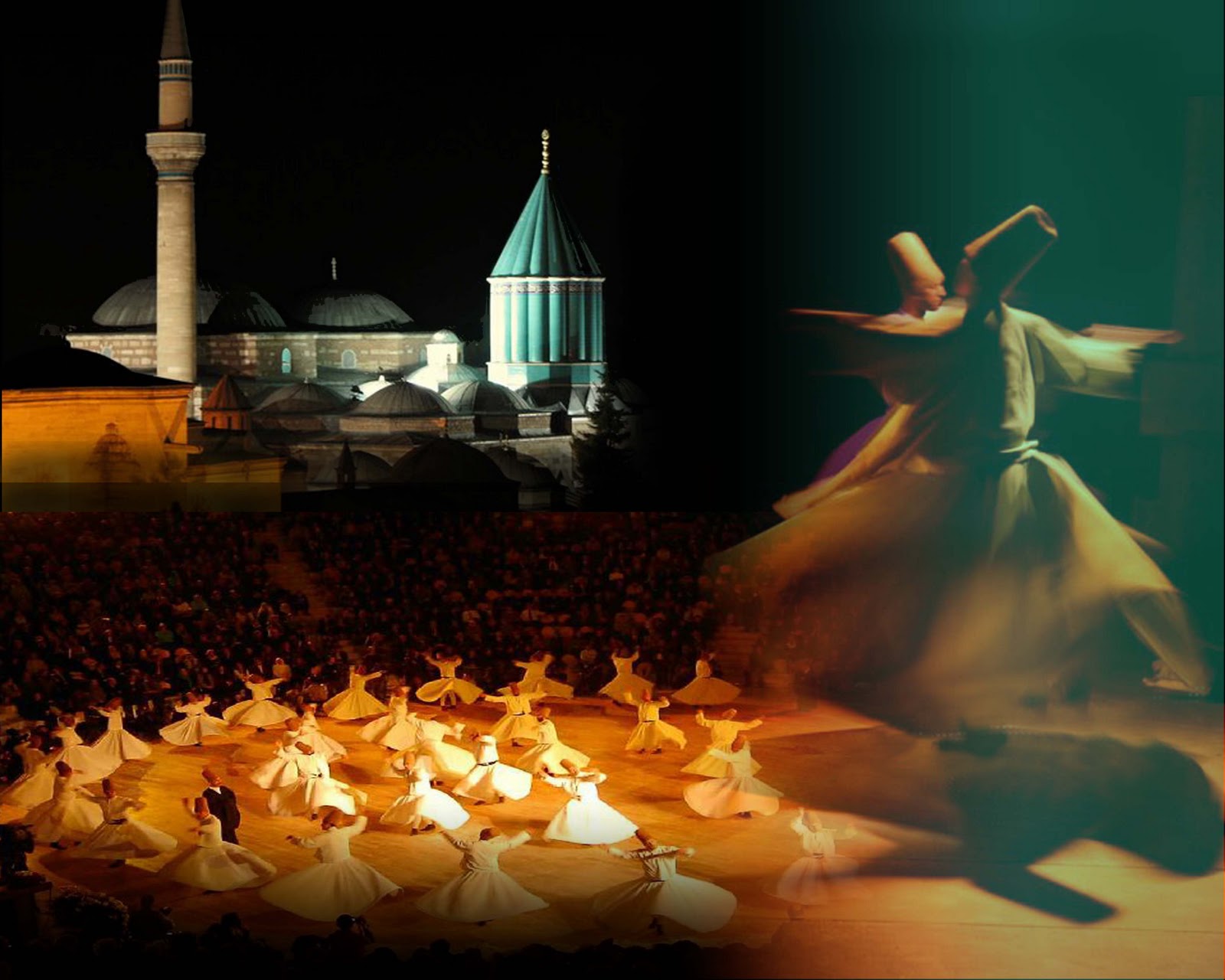Whirling Dervishes (Sema Ceramony)
Whirling Dervishes, Sema is part of the inspiration of Mevlana Celaleddin-i Rumi as well as of Turkish custom, history, beliefs and culture. It is what we do as a form of remembrance of God.
From a scientific viewpoint we witness that contemporary science definitely confirms that the fundamental condition of our existence is to revolve. There is no object, no being which does not revolve and the shared similarity among beings is the revolution of the electrons, protons and neutrons in the atoms, which constitute the structure of each of them. As a consequence of this similarity, everything revolves and man carries on his live, his very existence by means of the revolution in the atoms, structural stones of his body, by the revolution of his blood, by his coming from the earth and return to it, by his revolving with earth itself.
Sema Consists of Seven Parts:
Part One: The dervish with his headdress (his ego’s tombstone), his white skirt (his ego’s shroud) is removing his black cloak spiritually born to the truth, he journeys and advances there. At the onset and each stop of the Sema, holding his arms crosswise he represent the number one, and testifies to God’s unity. While whirling his arms are open, his right hand directed to the skies ready to receive God’s beneficence, looking to his left hand turned toward the earth, he turn from right to left around the heart. This is his way of conveying God’s spiritual gift to the people upon whom he looks with the eyes of God. Revolving around the heart, from right to left, he embraces all the mankind, all the creation with affection and love… It starts with an eulogy “Nat-I Serif” to the Prophet, who represents love, and all Prophets before him. To praise them is praising God, who created all of them.
Part Two is a drum voice, symbolizing God order to the Creation: “Be.”
Part Three is an instrumental improvisation “taksim” with a reed “ney.” It represents the first breath which gives life to everything. The Divine Breath.
Part Four is the “dervishes” greetings to each other and their thrice repeated circular walk “Devr-i Veled,” with the accompaniment of a music called “peshrev.” It symbolize the salutation of soul to soul concealed by shapes and bodies.
Part Five is the Sema (whirling). It consists of four salutes or “Selam”s. At the end of each as in the onset, the dervish testifies by his appearance to God’s unity.
The first salute is man’s birth to truth by feeling and mind. His complete conception of the existence of God as Creator and his state of creature.
The second salute expresses the rapture of man witnessing the splendor of creation, in front of God’s greatness and omnipotence.
The third salute is the transformation of rapture into love and thereby the sacrifice of mind to love. It is a complete submission, it is annihilation of self with in the loved one, it is unity. This state of ecstasy is the highest grade in Buddhism, defined as “Nirvana” and in Islam “Fenafillah.” However, the highest rank in Islam is the rank of the Prophet, he is called God’s servant first and his messenger afterwards. The aim of Sema is not unbroken ecstasy and loss of conscious thought. At the termination of this salute, he approves again by his appearance, arms crosswise the Unity of God, consciously and feelingly.
The forth salute: Just as the Prophet ascends till the “Throne” and then returns to his task on earth, the whirling dervish reaching the state of “Fenafillah,” return to his task in creation, to his state of subservience following the termination of his spiritual journey and his ascent. He is a servant of God, of his Books, of his Prophets and all his creation.
Part Six: Sema ends with a reading of the Quran and specially of the verse from sura Bakara 2, verse 115:
Unto God belong the East and the West, and whither over ye turn, you are faced with Him.
He is All-Embracing, All-Knowing.
Part Seven is a prayer for the repose of the souls of all Prophets and all believers.
You can watch whirling dervishes sema ceramony daily in Istanbul.
